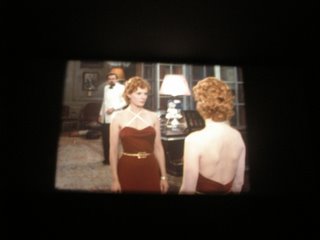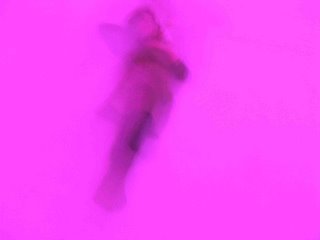
Oct. 22 Amsterdam Filmmuseum.
Melik Ohanian's Invisible Film was accompanied by a rare showing of its source, Peter Watkins' controversial political docu-drama, Punishment Park, made in 1971 at the height of the Vietnam War and immediately removed from circulation after a four-day screening in New York. Invisible for over thirty years, the film presents a documentary style simulation of a state of emergency in which civil liberties are suspended and 'suspect' individuals (drawn from a broad spectrum of the US sixties counter-culture) preventively tried and sentenced without jury or appeal. Offered the choice between a lengthy prison term and four days in Punishment Park they opt for the latter, where they become the prey of police and national guard in an organized manhunt that promises the mirage of freedom to the lucky survivors but whose grim purpose and conclusion is clear from the start.
Ohanian took one of the few surviving prints of the Watkins film to the Mojave Desert where it was shot and projected it without a screen into the desert void, recording the phantom projection on video. Invisible Film consists of nothing more than this single fixed shot of the same duration as Punishment Park whose soundtrack can be heard both on and off screen, the delay echoing the temporal distance between the two works. Despite its conceptual nature, Invisible Film demands to be 'seen' in its entirety, preferably before seeing Punishment Park, an opportunity we were afforded at the Filmmuseum. As the projector empties its stream of light into the desert, we hear the soundtrack of Watkins film as a frantic melange of conflicting voices, forcing us to forge our own mental image of the people and events the film describes, effectively freeing it from its historicity to reflect also on the present ob/scene: the US occupation of Iraq and Afghanstan and the 'punishment parks' of Guantanamo Bay, Abu Grahib and elsewhere. Meanwhile as we watch night descend on the desert horizon, Ohanian's film, in part through the flatness of the video image, equally becomes a meditation on the twilight of 'projection' (in the sense proper to cinema that Godard speaks of in conversation with Serge Daney in Histoire(s) du Cinema), the distance at once critical and utopian required to imagine into being the lost horizon of the real and with it a possible renewal of the world.
As an ironic footnote, we were the only members of the audience who sat through the whole of Invisible Film, almost as though keeping vigil over the projector, a strange obelisk in a monument valley of its own making. Yet had we left before the end, the circle would have been complete.
Oct. 23 OT301
We check out the DNK improv night at Amsterdam squat/venue OT301 where Australian musicians Thembi Sodell (sampler, electronics) and Anthea Caddy (cello) give an invigorating performance that moves from Lachenmann-style single sound-event trajectories to Pendereckian harmonies to Lynchian ambient soundscaping to Merzbowish squall, all in the space of just under an hour.

Oct. 27, Paris
Caught a showing of Marguerite Duras' India Song redoubling the Straubian/Godardian lesson on the crucial disjunction between sound and image - one that few of today's filmmakers seem keen to follow - through ulterior disjunctions between the film's multiple voices-off.
At Instants Chavirés (Montreuil) a group featuring Greek laptopper Yannis Kyriakides and Andy Moor (from The Ex) improvise a new soundtrack to René Clair's Paris qui dort.
The spectacle is the guardian of sleep... (Debord)

Today was also the first anniversary of banlieu uprisings which began in Clichy-sous-Bois after two youths died, electrocuted in a power station while trying to flee from police (CHAMBRE A GAZ. CHAISE ELECTRIQUE in the lapidary terms of Straub-Huillet's last video Europa 2005).
A year on the flames are kindled once again...

Oct. 29
Chantal Akerman's Là-bas.

No comments:
Post a Comment